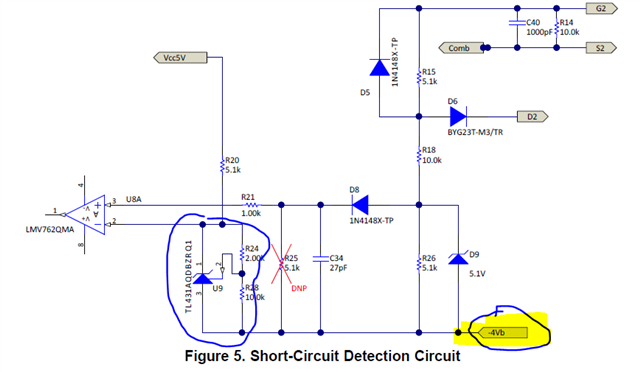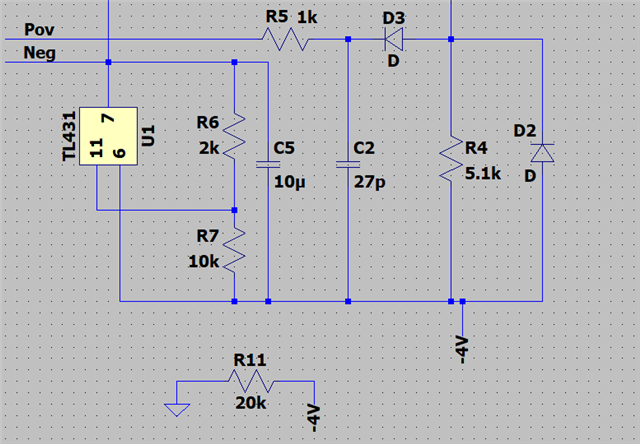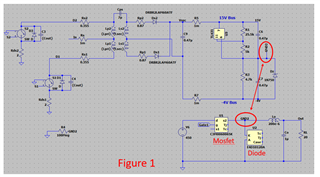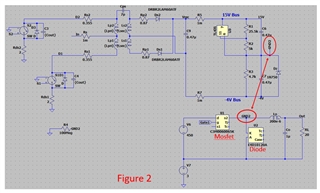Other Parts Discussed in Thread: TIDA-01605
Hi TI team,
The picture below was taken from TIDA-01605 reference design. The TL431 in blue circle is used to create 3V reference for the comparator.
However, the anode of TL431 is connected to -4V potential. Since the output voltage is 3V, the potential of Cathode is -4V + 3V = -1V.
I tried to simulate this circuit in LTspice as shown in the right picture. However, I noticed that whenever I connected TL431's anode to -4V, it did not work. TL431 only works when its anode connected to 0V.
Could you explain this issue? How can the TL431 work when it's anode is connected to -4V as shown in the schematic of reference design?
In reality, does it matter if we connect its anode to a negative or positive voltage for reference?
Thanks a lot!





